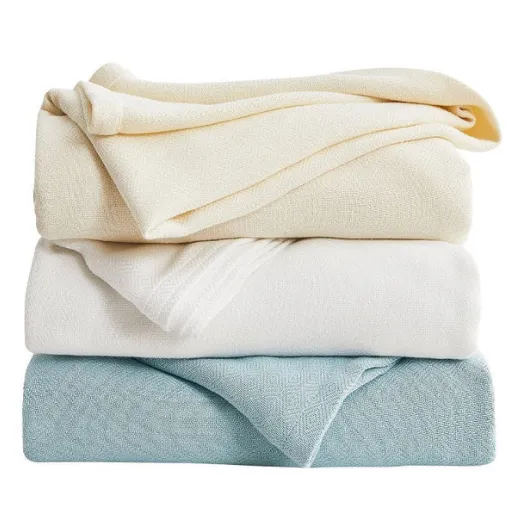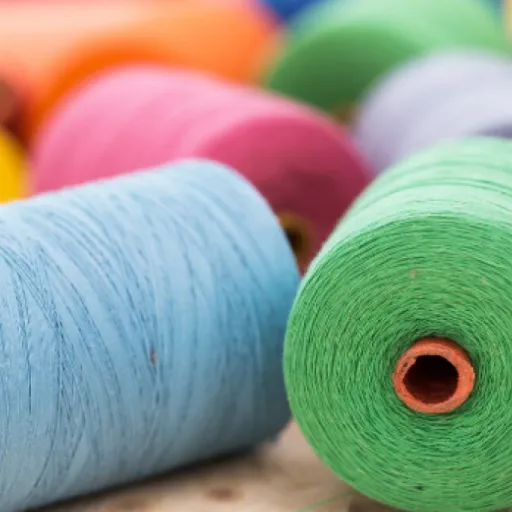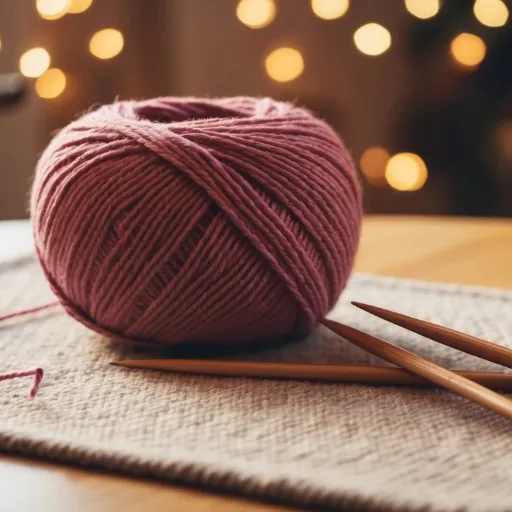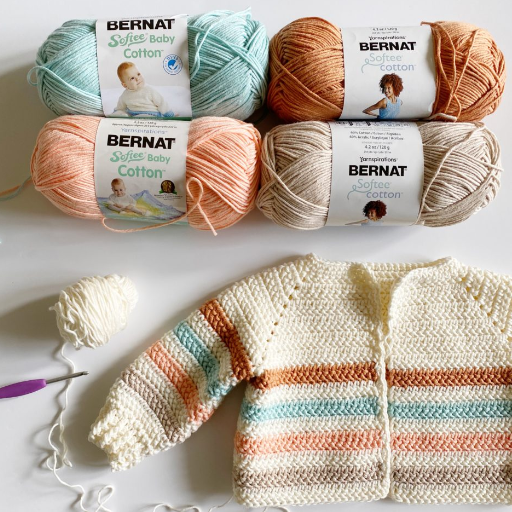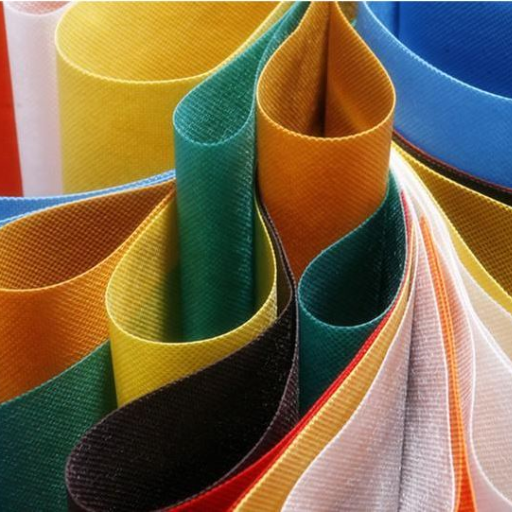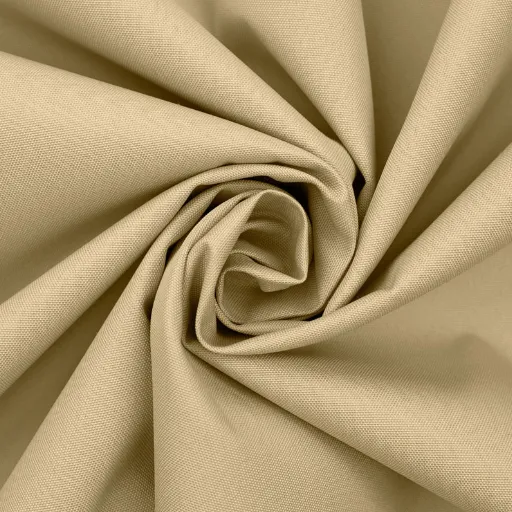When it comes to selecting the perfect yarn for your crafting projects, the numerous options available on the market can be overwhelming, especially the synthetic possibilities, such as polyester and acrylic. While both yarn types are brilliant for producing long-lasting, fantastical-looking pieces of work, they each have distinct advantages. Understanding the differences between acrylic and polyester yarn can significantly impact the success of your project, especially if you are making a crocheted blanket, a knitted scarf, or fashioning up accessories. This guide aims to educate you on the strengths, weaknesses, and applications of both yarn types, enabling you to make a thoughtful choice that takes into account the types of projects you intend to undertake.
Polyester and Acrylic Yarn: An Overview
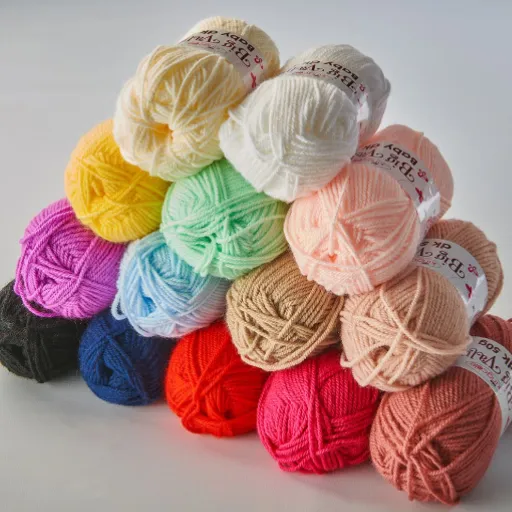
Affordable and versatile, both polyester and acrylic yarns are popular choices among crafters, as they come in a wide range of colors and textures. Polyester yarn is suitable for projects that require ruggedness, such as accessories frequently used outdoors or items of clothing commonly washed, because it is moisture-resistant and stronger. On the other hand, acrylic yarn is appropriate for items like cowls, slippers, and blankets because it is soft, warm, and lightweight. Although both types of yarn can be used in almost any project, the project and desired final feel of the piece should be taken into account.
What Are They?
Polyester: In the garment industry, polyester is a synthetic fiber created from monoethylene glycol (MEG) and purified terephthalic acid (PTA), which is commonly derived from petroleum. It is now used in a variety of items.
Acrylic: Acrylic fiber is another synthetic fiber that is crafted out of acrylonitrile in a polymer. Acrylic is manufactured in a way that mimics the properties of natural fibers, such as wool, providing a level of comfort and warmth while being lighter and less expensive.
Modern makers and creators enjoy making items with wool because it has warmth. People can wear wool without difficulty due to its lightweight feature. The two fibers provide lightweight materials, utilize more advanced technology, and meet high standards, which is why modern-day makers and creators prefer using them.
Why Compare Them?
Knowing the difference between polyester and acrylic yarn is essential for making informed choices when selecting materials for various applications, whether for clothing or other purposes, based on the properties of these materials. When we examine search engines, the search data results indicate that people make noticeable queries comparing these materials, and the reason is the associated advantages of these materials. The exceptional strength and ability to absorb moisture of polyester yarn, along with its weather resistance, make it an outstanding material for sportswear and other outdoor clothing. Acrylic yarn, on the other hand, is excellent in terms of its softness and warmth, making it a primary choice for chilly weather and related dressing situations. Advertisements and sellers attempt to exploit these perspectives of the fabric, which may lead to a distorted view of the fabric. Through a comparison of polyester and acrylic yarn, one can deduce which of the two addresses the numerous concerns, taking into account cost, endurance, texture, and the environmental impact they have.
Key Differences Between Polyester and Acrylic Yarn
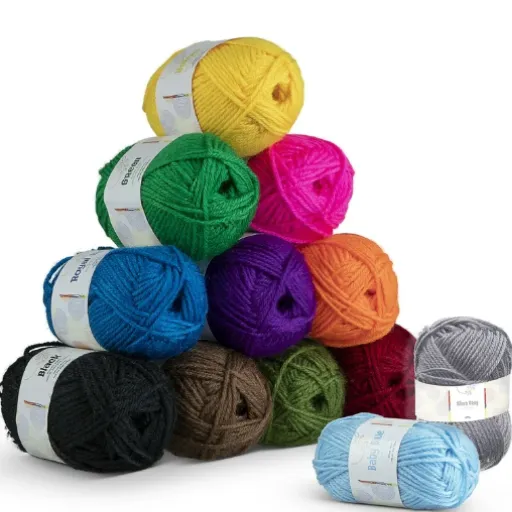
| Aspect | Polyester | Acrylic |
|---|---|---|
| Composition | Synthetic fiber derived from petrochemicals | Manufactured from polymerized acrylonitrile |
| Durability | More durable, better for extreme use and outdoor environments | Long-lasting but less durable over time |
| Texture | Semi-soft with a rather dull texture | Soft and wool-like feel |
| Moisture-Wicking | Excellent for activewear and outdoor gear | Less efficient, holds more water |
| Cost | Moderate pricing | Slightly cheaper, budget-friendly |
| Environmental Impact | Not biodegradable, but recyclable options are available | Not biodegradable, produces microfibers |
Durability
With respect to wear and tear, the durability of polyester yarn is generally superior to that of acrylic yarn. Polyester is highly resistant to stretching, shrinking, and abrasion, making it an ideal choice for items that undergo frequent usage or require regular cleaning. Additionally, it effectively wards off pilling, a problem that acrylic yarn tends to exhibit as it ages. On the other hand, although still strong, the lower durability of acrylic yarn makes it susceptible to heavy wear, especially in high-friction areas. While the two are equally challenging, polyester fibers offer enhanced durability over an extended period.
Texture and Feel
Both polyester and acrylic yarns offer users a range of options for various projects. While the advancement of manufacturing has made it possible to create softer polyester yarns that are comparable to traditional yarns, it is essential to note that acrylic yarn, as a whole, still has a distinct feel. Unlike polyester yarn, which has a smoother texture and a subtle glossy finish, wool-like acrylic yarn has a softer feel, and it is suitable for blankets and other projects that require a sense of warmth. Wool-inspired acrylic yarn is ideal for creating cozy garments or accessories, as it adds an elegant touch. All in all, the two textured polyester and acrylic yarns come in different options, ranging from silky and glossy to fluffy, which means users have a fair chance to experiment with various types of yarns. Ultimately, the choice between these two types comes down to personal and project preferences.
Color Retention
Yarn color retention is best with polyester and acrylic yarns due to their synthetic nature. Polyester yarns are modified for color retention, which includes keeping their color after washing, as well as effective dye hold. On the other hand, acrylic yarns retain their color, although higher-intensity UV may cause slightly more color fading compared to polyester. For long-lasting, vibrant hues, the choice of yarn — whether polyester or acrylic — is primarily dependent on the need and the environment in which it will be used.
Cost-Effectiveness
While discussing the budget-friendly aspect of polyester-blended and acrylic-blended yarns, the slight price advantage often lies in the polyester-blended yarn. This is due to the economic benefits offered by the vast utility of industrial processes and efficient manufacturing. Although on the same page, acrylic yarns have project costs that can vary, depending on the quality and company. The current batch of research data has shown that consumers are seeking affordable yet long-lasting solutions in both the crafting and textile industries. Regarding the mentioned features, acrylic yarn offers numerous benefits, albeit at a relatively higher and sustained cost.
Environmental Impact
The environmental impact of polyester and acrylic yarns is drawing considerable attention. The tighter yarns of plastics, such as polyester, which is derived from petroleum, pose a danger to living creatures, including fish, birds, and marine life. Acrylic is also harmful in a similar way, as it produces microfibers and consumes a significant amount of energy, and can even be made from fossil fuels. One thing I have come across in the most recent data is the search trend for environmentally friendly yarn. This is in relation to the public’s concern and demand for increased awareness of the issues surrounding crafty products.
Pros and Cons
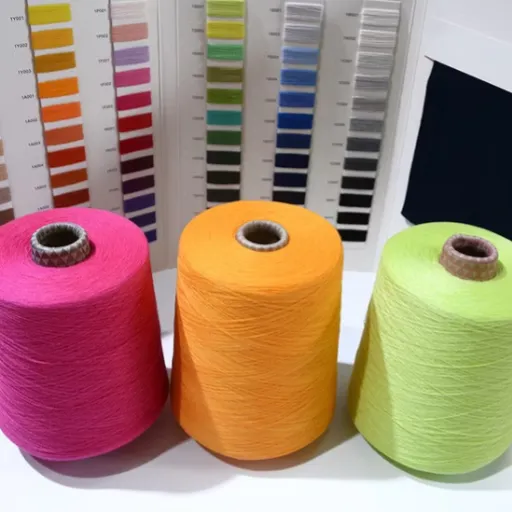
Pros:
- Environmentally Friendly: Sustainable yarns are often biodegradable or made from recycled materials, reducing environmental impact.
- Reduced Pollution: They contribute less to water pollution by limiting the release of synthetic microfibers.
- Ethical Production: Many sustainable yarns are produced using ethical practices, thereby benefiting both workers and the communities in which they operate.
- Growing Availability: With rising demand, a variety of eco-friendly options are increasingly accessible.
Cons:
- Higher Cost: Sustainable yarns can be more expensive than their synthetic counterparts.
- Limited Selection: They may offer fewer color or texture choices compared to traditional yarns.
- Durability Concerns: Some natural fibers may lack the resilience of synthetic materials, which can impact their longevity.
- Availability Issues: Depending on location, eco-friendly yarns may not always be widely available.
Polyester Yarn
Polyester yarn, a synthetic product, is incredibly useful to the garment manufacturing industry, among many others, mainly due to its unique qualities and durability. It is more tear-resistant and wrinkle-resistant compared to other materials, in addition to which it performs very well under resiliency and durability testing. For this reason, items that are expected to be worn frequently, such as uniform parts and pajamas, are best made from polyester. Furthermore, the raw cost of polyester is significantly lower due to its increased reliance for manufacturing purposes.
How does the polyester yarn manufacturing process affect the environment?
There are considerable drawbacks. The production and disposal of polyester yarn cause significant harm. These substantial damages are a byproduct of waste production, as the polyester material is initially derived from raw petroleum, which in turn contributes to global warming. Not only this, but the resources it consumes are non-renewable. Furthermore, the use of microplastics leads to an unavoidable legacy of waste that poses a significant risk to the environment, human health, and wildlife. Additionally, another primary concern is the microplastic waste released into washing machines, lakes, and rivers, which contaminates water and harms aquatic life. Although institutions are working to collect waste polyester, it remains an ongoing problem, contributing to the net increase in pollution.
Acrylic Yarn
Acrylic yarn is an affordable, durable, and lightweight material used in various applications, including home decor, crafting, and clothing, as it is also a synthetic fiber. However, similar to polyester, it poses a significant environmental problem. Due to its lightweight nature and acrylic fibre composition, it is very energy-intensive to produce and sheds a substantial amount of microplastics during use, causing considerable damage. In most cases, a mixture of clothing with acrylic fibers, such as leggings, can ruin the life of a garment in a single wash. Plastics are now mixed with almost everything to create a convenient lifestyle, which is burdening the planet with the need for plastic recycling. There is an untapped richness in nature’s offerings, such as bamboo, which is more eco-friendly and biodegradable.
Real-World Applications
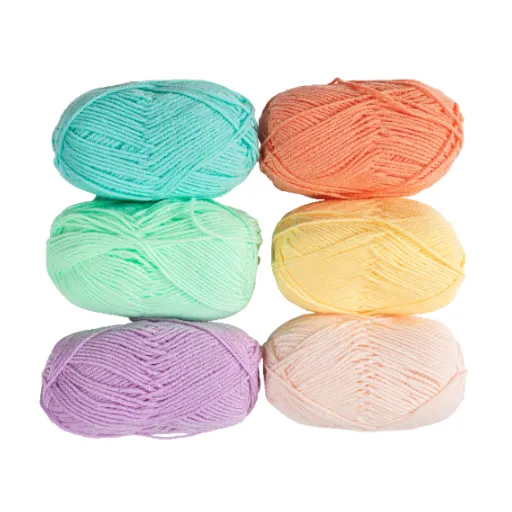
Using Polyester Yarn
Polyester yarn, another popular synthetic fabric, is highly valued for its qualities, including elasticity, durability, and ease of fabric maintenance. A blend of cotton and polyester is widely used in garment design and upholstery due to its unique polymer chemistry. Additionally, it is also appreciated for its fine texture, which resembles cotton, making other materials look good as well and providing comfort. Alongside enhancing comfort and ensuring garments remain durable, companies often emphasize that cotton and polyester always convey style. Indeed, the coating is not as harmful from the wearer’s perspective, but the blend does contain unwanted chemicals, so regular maintenance is necessary to limit their exposure. Similar to other synthetic fibers, its environmental impact is also troubling, particularly in terms of microplastic pollution. Synthetic fibers, as a concern for the environment, are being alleviated by the persistent efforts of partners to develop recycling machines. This also provides better solutions for future material needs.
Use of Acrylic Yarn
For the thrifty artists out there, there’s nothing quite like acrylic yarn. Everything from the vibrant hues to the infinite ways to incorporate it makes it the number one choice. Given its spectrum of attributes, acrylic yarn has established a distinct niche in the community of wool substitutes used in products such as clothing, accessories, and blankets. One of the benefits of using acrylic yarn is that it retains its shape. This is especially useful for people who create home decorations, as these types of projects typically require high durability. One possible downside of acrylic yarn, though, is that some of the same limitations of polyester apply. The yarn itself is a non-renewable product and contains its own microplastics, which are known to contribute to environmental pollution. Nonetheless, developments in both the fabric and textile sciences are slowly introducing models of acrylic yarn that are more environmentally friendly. It seems they are embracing the new wave, of which ecological crafts are a significant part.
It’s easy to justify using acrylic yarn for projects due to its accessibility, durability, and ease of washing. Its insulating properties make it ideal for creating sweaters, scarves, and even socks, mainly due to its lightness. Furthermore, the significant number of available colors of acrylic yarn and the ease of creating various designs make it perfect for crafting projects such as knitting and crocheting. However, one can’t forget about its ecological drawbacks.
In this regard, fashion and craft designers should seek to find and introduce greener alternatives for unwoven goods, such as scarves, which not only serve a decorative purpose but also keep us warm. For this purpose, wools and other materials that are environmentally friendly and are not derived from crude oil ought to be favored.
User Reviews and Expert Opinions
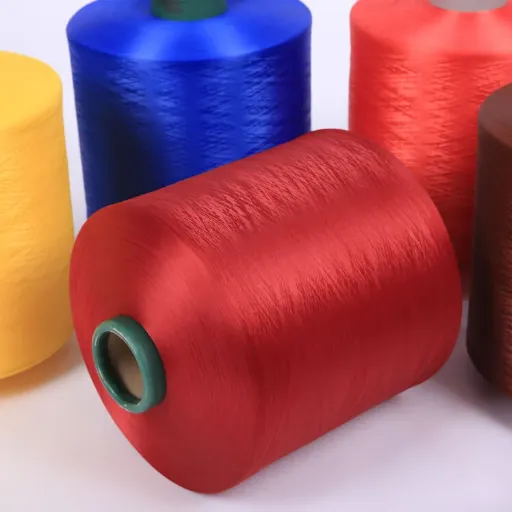
The simplified attributes of acrylic yarn include its less costly, vivid color options and straightforward maintenance, which not only make it top-tier for beginners but also for veteran crafters. The fact that it can be used for a variety of projects—like page blankets and articles of clothing—is a definite bonus and is appreciated by many. Still, though the list of obvious drawbacks is its quite subpar breathability and the additional harmful fallout of every other toxic acrylic yarn product, microplastics.
Conducted research plus reviews from expert sources approximately confirmed that the reason why acrylic yarn is so simple to use is because, being a positive one, polyester fiber (its basis) is significantly more sustainable than all of the other types of plastic. To improve its reliability and functionality, it would make sense to use it in conjunction with other fibers or to develop alternative methods that are less risky & hazardous.
User Reviews
I consider acrylic yarn to be an excellent choice for people learning to knit because of the numerous colors it offers and its very low cost. Having said that, the feathers that are as breathable as those made in wool also touch me the way that they produce grazes on our planet. Hopefully, in the near future, they will add fibers produced in sustainable methods.
Expert Opinions
The group of experts has advised that although it is essential to utilize acrylic yarn due to its reasons, such as its strength, affordability, and wide range of color options, the impact it creates on the environment is not dismissible. However, recent strides achieved in the textile industry show promise in combating the menace. Combining acrylic and biodegradable fibers, or even recycled materials, will actually help reduce the environmental harm it causes. In turn, fragily colored biodegradable and bio-renewable resources that are made available should be prioritized, as doing so will lead towards catering to the ever-growing requirements for eco-friendly yarns. These expert suggestions highlight the critical need to strike a balance between the environmental impact and the lower sustainability associated with the production of various warm clothes and textiles.
Reference Sources
Take a look at the three scholarly sources in the realm of academic research that will help you ascertain whether your article on the “differences between polyester and acrylic yarns” holds water.
- Performance Properties of Plain Knitted Fabrics Made from Open-End Recycled Acrylic Yarn
Published on SpringerLink
The investigation of the properties of recycled acrylic yarn and its comparison with other yarns, such as polyester. - LCA Benchmarking Study on Textiles Made of Cotton, Polyester, Nylon, Acrylic, or Elastane
Published on SpringerLink
A study of life cycle assessment (LCA) has been conducted to compare the environmental impacts of various textile materials, including polyester and acrylic. - Effects of Usage of Acrylic Yarn on Thermal Comfort and Moisture Management Properties of Woven Shirting Fabrics
Published on DergiPark
Studies on thermal comfort and moisture management properties of acrylic fibers in comparison with polyester fabrics.
Frequently Asked Questions (FAQs)
What is the difference between polyester and acrylic yarn?
The main differences between polyester and acrylic yarn lie in their composition and properties. Polyester yarn is made from synthetic fibers derived from petroleum or natural gas, while acrylic yarn is a man-made fiber produced from acrylonitrile. Polyester is known for its durability and resistance to wrinkles and shrinking, making it suitable for a wide range of applications. In contrast, acrylic yarn is often softer and less durable than polyester.
Is polyester yarn more durable than acrylic yarn?
Yes, polyester is generally more durable than acrylic yarn. Polyester yarn is renowned for its strength and resistance to wear and tear, making it an ideal choice for projects that demand durability. Acrylic yarn, while comfortable to wear, may not hold up as well over time, especially in high-use items like sweaters or blankets.
Can you machine wash yarn made from polyester and acrylic?
Both polyester and acrylic yarns are easy to care for and can often be machine-washed and dried without damage. However, it’s essential to check the care instructions for each specific yarn type, as some blends may have different requirements. Generally, polyester yarns demonstrate superior moisture-wicking properties, making them ideal for projects that may be exposed to moisture.
What are the uses of polyester yarn?
Polyester yarn is often used in home textiles, activewear, and crochet projects due to its durability and moisture-wicking properties. It is also a popular choice for making yarns that require superior tensile strength compared to natural fibers, such as cotton or wool. Polyester fabrics are commonly found in clothing, upholstery, and outdoor gear.
How does acrylic yarn compare to natural fibers like wool?
Acrylic yarn is a man-made fiber that offers a wool-like appearance and feel but is generally less expensive and easier to care for than natural fibers like wool. While acrylic is comfortable to wear, it may lack the breathability and warmth of wool. Additionally, natural fibers possess unique properties, such as moisture absorption, which acrylic does not have.
Are there environmental impacts associated with polyester and acrylic yarn?
Yes, both polyester and acrylic yarns have environmental impacts due to their production processes, which often involve the use of petroleum-based resources. The production of acrylic yarn can also release harmful chemicals. However, the use of recycled polyester is gaining popularity, as it helps reduce waste and the reliance on virgin materials. Choosing sustainable yarn options can help minimize the environmental impact.
What are the benefits of using acrylic yarn for knitting?
Acrylic yarn possesses several benefits for knitting, including affordability, a wide range of colors, and ease of care. It is lightweight and comfortable to wear, making it suitable for various projects, such as blankets, hats, and sweaters. Additionally, acrylic yarn is less likely to shrink compared to natural fibers, providing ease of use for knitters.
What is the best choice for outdoor garments: polyester or acrylic yarn?
For outdoor garments, polyester yarn is often the better choice due to its durability and moisture-wicking properties. Polyester fibers are renowned for their strength and resistance to the elements, making them an ideal choice for activewear and outdoor textiles. Acrylic yarn, while soft, may not provide the same level of performance in challenging weather conditions.








